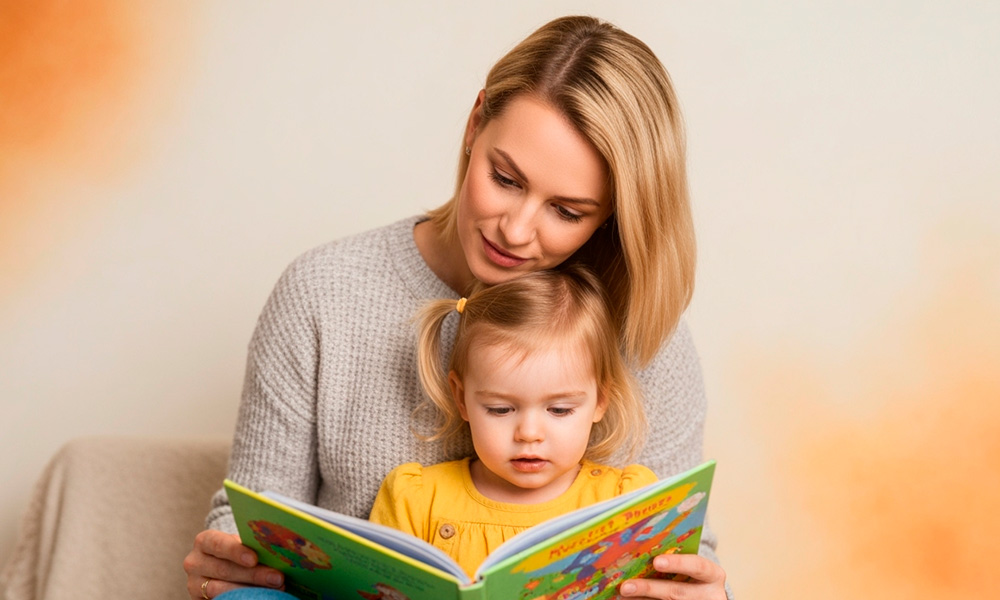There’s a special kind of magic in cuddling up with your child and a good book. You’ve journeyed to enchanted forests, sailed across pirate-infested seas, and met countless talking animals, all from the comfort of your couch. Your voice has been the guide, and your child, the captivated listener.
But now, a new, exciting chapter is beginning. You see them pointing at words they recognize on signs, sounding out the letters on their cereal box, and showing a budding curiosity to take the reins themselves. This is the incredible transition from listener to leader—the journey to independent reading.
This leap can feel a little daunting for both kids and parents. How do you encourage them without adding pressure? How do you keep the magic of storytime alive when they’re sounding out ever single word?
The secret is to make it a game. At Fableau, we believe that reading should always be a joyful adventure. That’s why we’ve gathered 5 fun, low-pressure activities to help your little one build confidence and become the hero of their own reading story.
1. The Reading Relay (Paired Reading)
This is the perfect bridge from being read to, to reading aloud. Instead of handing them the book and walking away, you do it together as a team.
- How it works: Start by reading a sentence or a short paragraph aloud, tracing the words with your finger. Then, signal that it’s their turn to read the next one. If they get stuck, offer gentle help without taking over.
- Why it’s great: This “I read, you read” approach provides a safety net. It reduces anxiety because they know your help is just a sentence away. It also models fluent reading, showing them the rhythm and expression that make stories come alive.
2. Word Detective
Turn everyday life into a word-finding scavenger hunt! This activity builds sight word recognition—those common words like “the,” “and,” “is,” and “a”—in a playful, context-rich way.
- How it works: Choose a “word of the day.” Write it on a sticky note and declare you are both “Word Detectives.” Your mission is to find that word everywhere you can—in the book you’re reading, on food labels in the pantry, on street signs during a walk. Celebrate every discovery!
- Why it’s great: It shows children that words aren’t just in books; they’re all around us. This makes reading feel relevant and powerful, not just like a school-related chore.
3. The Picture Walk Predictor
Before you even read the first word, you can empower your child to be a storyteller. A “picture walk” is a fantastic pre-reading activity that builds comprehension and confidence.
- How it works: Go through the book page by page, looking only at the illustrations. Ask open-ended questions like, “What do you see happening here?” or “Who do you think this character is? What do you think they’ll do next?” Let your child’s imagination run wild as they piece together their own version of the story.
- Why it’s great: This gives your child a sense of ownership over the narrative. When it’s time to actually read the words, they’ll already have a framework of the plot, making it easier to decode tricky words and understand the story’s flow.
4. Create an Alternate Ending
Who says the story has to end the way the author wrote it? This activity sparks creativity and shows your child that they can interact with a story, not just receive it.
- How it works: Read a familiar story but stop just before the last page or two. Then, turn to your child and ask, “What if it ended a different way? What would you make happen next?” You can talk it out, draw the new ending, or even act it out.
- Why it’s great: It encourages critical thinking and deepens their connection to the characters and plot. It reinforces the idea that reading is an active, imaginative process, not a passive one.
5. Make Them the Star of the Show
What’s the single most motivating factor for a child learning to read? Seeing themselves in the story. When the main character shares their name, their appearance, and their personality, the desire to read the words becomes personal and irresistible.
- How it works: Introduce a book where your child is the hero of the adventure. A personalized book from Fableau doesn’t just include their name—it weaves their identity into the very fabric of the tale. As you read together, point to their name on the page and say, “Look, that’s YOU! What are YOU doing now?”
- Why it’s great: This is the ultimate confidence booster. It transforms the challenge of reading into an exciting act of self-discovery. Seeing their own name in print validates their importance and makes the story profoundly engaging.
The Journey is the Destination
The transition to independent reading isn’t a race. It’s a journey filled with small victories, funny mispronunciations, and the incredible moment when you hear them reading quietly to themselves for the very first time.
By keeping it fun, playful, and personal, you are doing more than just teaching them a skill—you are nurturing a lifelong love of stories.









